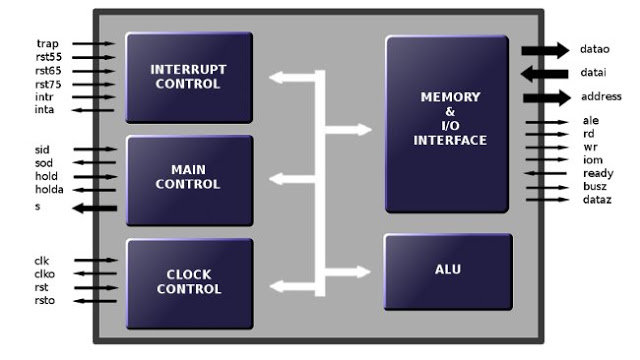8085 Microprocessor and its General Architecture-
Microprocessor-
8085 is the most popular microprocessor in 8 but series because it is fastest microprocessor because of N-MOS technology. (N-Channel Metal Oxide Semiconductor). In NMOS technology current conductions is only due to electronics 8 bit microprocessor means 8 bit data can be executed at a time. For more than 8 bit first functions, first 8 bit first executed and then other bits executed so time increases. It operate at frequency of 3.07Mhz.
Another advantage is that it is operate at the power supply of +5V.
One more advantage of 8085 microprocessor is that it is compatible with the TTL logical family.
It is 40 pin package. Earlier microprocessor are based on PREMOS technology because of this 8080 Microprocessor is not studied.
And there is one more disadvantage of 8080 microprocessor that it requires 3 power supply for its operation and it is not compatible with the TTL technology.
General Architecture of 8085 Microprocessor-
ALU-
ALU stands for the arithmetic and logical unit. All arithmetic and logical operations like Subtraction, Addition done by the ALU. Apart from these operations ALU also performs the Rotation, Shifting, Clearing and Refreshing operations.
Accumulator-
It is the primary register of 8085 microprocessor and all the operation performed by ALU gives result and that result stored in the accumulator. So basically accumulator stores the result given by ALU.
General Purpose Register-
8085 having 6 general purpose register. Each of 8 Bit long.
These registers are –B, C, D, E, H, L
The basic function of these register are storing temporary data during executions of instructions.
Special purpose Registers-
These register are used by microprocessor itself. User cannot uses these register.
eg: Program counter, Instruction registers an status register
Stack pointer-
Timing and Control Unit-
It controls flows of signal require for operation of instruction for transferring of data from microprocessor to memory or to output devices.
